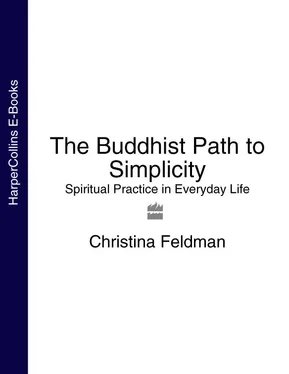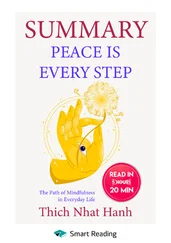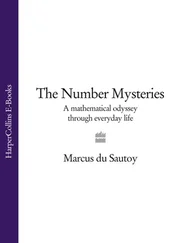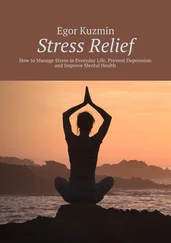A woman once came to me wanting to be taught how to meditate. She was understandably distressed by the tension, struggle, and conflicting demands present in her life—financial hardship, an alcoholic partner, and a hostile stepson. She said, “All I want is some peace.” After receiving some instructions she went home to practice only to return a week later even more distressed. She spoke of how, as her mind began to calm down, she became even more acutely aware of the nature of the conflicts in her life and what she would be called upon to change to bring the tension to an end. Puzzled, because it seemed that the meditation was indeed working, I asked her what the problem was. She answered, “I didn’t ask for awareness, I only wanted peace.”
Awareness and understanding have real implications in our lives. We need to be willing to be changed by the insights that come to us. When we recognize our habitual pathways of complexity, we are invited to find new pathways to travel. Understanding the rhythm of change, the beginnings and endings intrinsic to life, is an insight that invites us to let go more easily. To try to hold onto, maintain, or preserve anything in this life, inwardly or outwardly, is to invite the experiences of deprivation, anxiety, and defensiveness into our hearts. Learning to embrace and live in harmony with all the changes, the births and deaths, beginnings and endings that life will inevitably bring to each of us, is to invite stillness and serenity into our hearts.
Simplicity is a journey that involves both our inner and outer worlds—they are interconnected, endlessly informing each other. Our lives are simply our hearts and minds taking form, made manifest. Our words, thoughts, actions, and choices are born within our hearts and minds. Untangling the knots of complexity found within our thoughts, feelings, and perceptions, we learn to untangle the knots of our lives. We learn how to be at home in each moment with calmness, balance, and the willingness to learn. Simplicity is not passive, a benign detachment from the turbulence of life; it is a way of placing our finger upon the pulse of our life and discovering the ways of liberation.
In the Tao Te Ching it is said,
I have just three things to teach: Simplicity, patience, and compassion.
These three are your greatest treasures. Simple in actions and in thought, You return to the source of being. Patient with both friends and enemies, You accord with the way things are. Compassionate toward yourself, You reconcile all beings in the world.
We carry with us the habits of a lifetime. We are not asked to unravel them all in one instant, but to care for and understand just one moment at a time; attuning ourselves to just this moment we begin to understand what leads to distress, complexity, and conflict, and what leads to calmness, balance, and freedom. Patience is the foundation of discovering simplicity. Patience is a gesture of profound kindness. We all have moments when we stumble and lose ourselves in our stories, fears, and fantasies. And we can all begin again in the next moment, recovering a sense of balance and openness. Patience teaches us to seek an inner refuge of simplicity, balance, and sensitivity in even the most turbulent moments. It is about learning to be a good friend to ourselves. Blame, judgment, and avoidance only divorce us from ourselves and exile us from the moment. Impatience always leads us away from where we are; wanting to jump into a better, more perfect moment. Impatience is the manifestation of resistance and aversion, it is the face of non-acceptance. Impatience never leads to the calm, simple contentment of being, but to perpetual restlessness and frustration. Patience is one of life’s great arts, a lesson we learn not just once, but over and over. In the moments we find ourselves leaning into a future that has not arrived, we can pause and learn to stand calmly in the moment. When we find ourselves frustrated with ourselves or another, we can remember that this is the very moment we are invited to soften our resistance and open our hearts.
Once I found myself in a monastery filled with a burning motivation to practice meditation and be silent. Contrary to my expectation, the monastery was no oasis of peace and serenity but a construction site. The sounds of saws and hammers, scaffolding being erected, and trucks arriving with building materials permeated every corner. Radios played, dogs barked: clearly the value I placed on silence was not shared by others. In despair and frustration I found myself demanding of the abbot how I was supposed to meditate in the midst of this chaos. His answer was, “How can you not?”
We gladly turn our attention to those most significant of questions, “What is truly important to us in our lives? What do we truly value in this moment?” Holding these questions clearly, we discover that we want to be happy, to be free from struggle and separation. They are questions that return us to this moment, to ask ourselves, “Where is peace, where is freedom, where is simplicity in this moment?” Patient not just outwardly with the circumstances of our lives, but with the friends and enemies within ourselves, we learn the happiness and simplicity of being with what is.
Compassion is another essential companion on the journey to simplicity. Simplicity is not only a gift of compassion for ourselves, but also for the world. Deprivation, poverty, and hardship will not be eased by ever more strategies, councils, or prescriptions. As Gandhi once said, “There is enough in the world for everyone’s needs, but not enough for everyone’s greed.” Each moment we lay down the burden of endless need, we become a conscious participant in easing the sorrow of the world. When we are no longer guided by the inexhaustible thirst of wanting, our relationship to life is guided by integrity. Compassion for ourselves is found in letting go of the stress of separation from the possibilities of richness, harmony, and freedom that lie within. Thomas Merton once said:
Of what avail is it if we can travel to the moon,
If we cannot cross the abyss that separates us from ourselves,
This is the most important of all journeys
And without it all of the rest are useless.
In Japan there is a monastic tradition whose practice is not only composed of traditional meditation but also the service of cleaning the local villages and public conveniences. Each morning the monks and nuns board their buses with buckets and mops to begin another day of cleaning toilets, streets, and waiting rooms. It is held as a sacred task, an act of thanksgiving, of caring for the world. When questioned on the spiritual value they found in such work, one of the nuns answered, “We are learning to live a simple life with great affluence.”
Simplicity can be found nowhere else but the life we are in and the path we walk within it. It lives in our hearts and minds, awaiting our commitment and wholehearted attention. We do not create simplicity but rediscover its availability and possibility. We begin by being present, turning our attention to our lives and ourselves, and availing ourselves of the invitation offered in each moment to discover peace and freedom. It may be one of the most challenging journeys we make; we only travel it one step at a time. Responding to one of his ardent admirers, standing beneath the roof of the Sistine Chapel, Michaelangelo reportedly said, “If you only knew how much effort it took to get here, you wouldn’t be so amazed.”
Take a few moments in your day to be still. Relax your body, close your eyes, and listen inwardly. Bring a calm, gentle awareness to whatever appears in your mind. Be aware of what your thoughts revolve around and dwell upon most frequently. It might be the memory of an event or conversation that has been disturbing. It might be rehearsals or plans for the future. You might be aware of your mind obsessing about or judging yourself or another. You might be aware of a tension in your mind or body; a restless energy that is wanting something more than the simplicity of this moment.
Читать дальше












